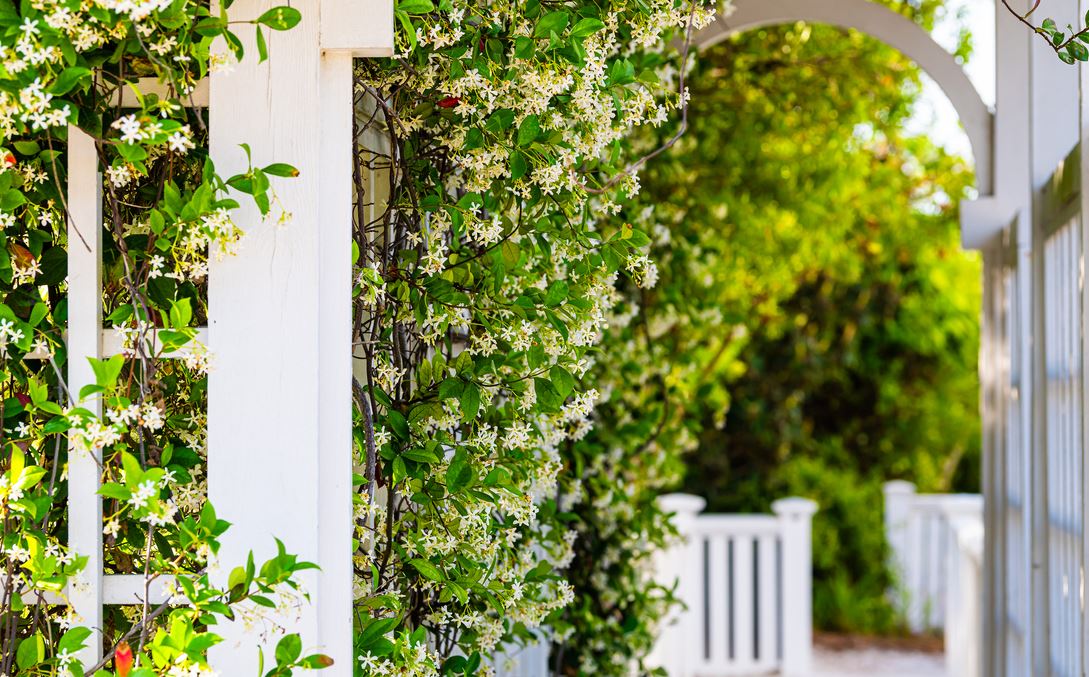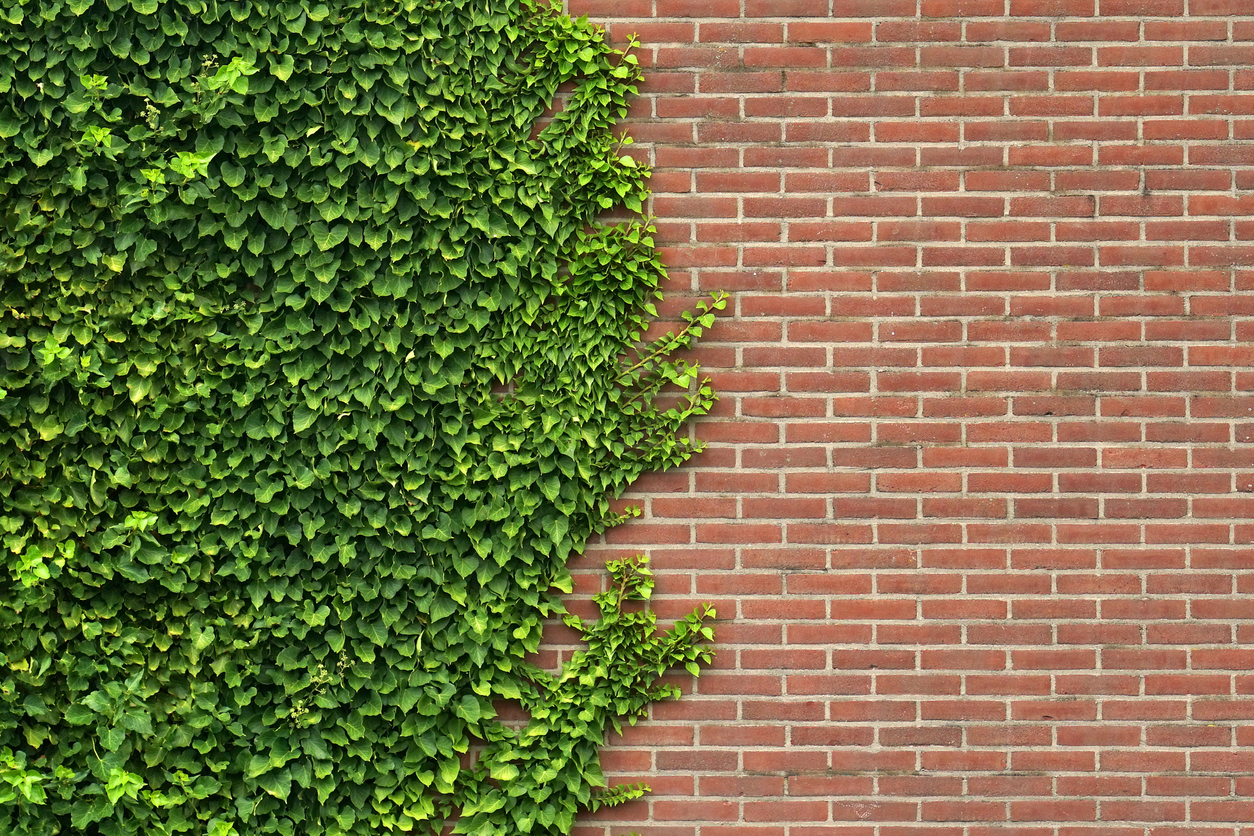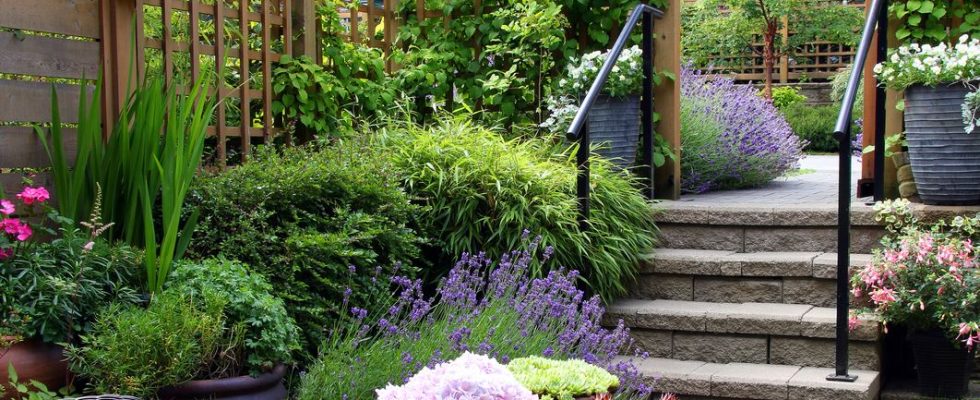The different types of climbing plants
Very numerous, climbing plants can be divided into different types with their own specificities and which will undoubtedly enter into your selection criteria.
1. Annual Climbing Plants
Among the climbing plants, you can find annual varietiessuch as morning glory, sweet peas, black-eyed suzanne, etc. Generally sown in the spring, their growth is rapid and the season is sufficient for them to cover their support and adorn it with a beautiful flowering of various shapes and colors. Unfortunately, they do not survive the first frosts.
2. Perennial Climbing Plants
Conversely, perennial vines remain from year to year. Some have evergreen foliage, while others are deciduous. Again, there are a wide choice with or without flowering. Among these plants, some examples are honeysuckle, ivy, false jasmine, some climbing roses, etc.
Choose those that will dress your support according to their hardiness and the climate of your region.
3. Flowering or non-flowering climbing plants
The vast majority of climbing plants are adorned with flowers. This is the case with jasmine, honeysuckle, clematis, etc. But if you are more sensitive to foliage and want to dress your support with it, you have, again, the choice with plants such as ivy, golden hops , Virginia creeper, etc.
4. Fruit climbing plants
And let’s not forget the climbing plants that produce fruit, such as the vine, the kiwi, but also certain species of passionflower.
5. Fragrant climbing plants
Certain climbing plants, most often among those with flowers, are distinguished by their unique fragrance. If you want a fragrant climbing plant that exudes a pleasant fragrance in your garden, you can choose between jasmine officinalis, wisteria, honeysuckle, clematis, climbing roses and many more.
6. Climbing plants to trellis or not
Beyond the types that we have just mentioned, all climbing plants can be classified into two categories :
- those that climb alone with the help of their crampons, their tendrils, etc., like Virginia creeper.
- those that need help to settle on their support, such as honeysuckle, etc.
The benefits of climbing plants

Climbing plants have more than one trick up their sleeve, the proof below:
- They benefit from a rapid growth. In just two or three years, a climbing plant can cover a support. Some are faster than others. This is the case with wisteria, Virginia creeper, honeysuckle, etc.
- They are practical. They allow you to hide an unsightly wall or wall. They can also be used as a privacy screen without wasting floor space.
- They are easy to maintain and their cultivation is generally rewarding when grown under the right conditions.
- Finally, they bring an aesthetic touch not negligible by giving verticality to your outdoor facilities.
Choosing the right climbing plant
If the choice of your climbing plant will inevitably depend on your tastes, certain criteria must be taken into considerationsuch as the exposure, the nature of the soil, the climate, etc. It is, in fact, important to choose a plant adapted to the growing conditions that you have to offer it.
Exposure being an essential criterion, you must, first of all, determine whether the location you intend for it is sunny, in partial shade, or in shade. Based on this criteria, here are some ideas:
- For a sunny location, you can opt for a bignone, a wisteria, etc.
- For a location in partial shade, you can turn to golden hops, akébia, etc.
- Finally, in the shade, you can bet on a climbing hydrangea or a winter jasmine, for example.
It will also be necessary to ensure that the hardiness corresponds to the region in which you live. After the climbing plant has been selected, it will be necessary to install it on a support.
Where to install your climbing plants?

The choice of support for your climbing plant will, beyond your preferences, depend on the climbing plant to be supported. For a wisteria, for example, it will need to be strong enough to withstand the strength and vigor of its stems. On the other hand, for a morning glory, a simple grill will suffice. We present below, different possibilities of installation of climbing plants.
On a fence
To take advantage of their ability to serve as a screen, you can install climbing plants along a fence. If it is a chain-link fence that the plant(s) will be able to climb, be careful to choose your plant(s) according to the resistance of the fence and to control their development by regularly pruning them. It can be a climbing rose, honeysuckle, star jasmine, ivy, etc.
On a pergola
It is possible to vegetate a pergola to benefit from a cool and pleasant shaded area. The result is generally of a remarkable effect. Again, it will be necessary to choose a sufficiently strong structure. For your pergola, you can opt for a wisteria, a bignone, a climbing rose, an Armandii clematis, etc.
On an arch
To enhance your outdoor space, you can install an arch on which to run climbing plants. Again, depending on the plants, it is necessary to choose an arch capable of withstanding the vigor of the stems. You will then enjoy a very aesthetic result.
On a wall or low wall
To hide an unsightly wall or low wall or simply to forget the limits of your property, it is possible to install climbing plants along this construction.
It is then preferable to choose climbers with suction cups, holdfasts or tendrils, which will be better able to attack your wall. You can then opt for a Virginia creeper, a climbing hydrangea, etc. or ivy provided the wall is undamaged and has no gaps into which they could creep.
On a trellis
On the wall to be masked, you can also install a trellis. It will allow you to trellis climbing plants while protecting the wall behind it. In the same way, you can, for example, install a palisade at the edge of the garden to make plants climb and create a screen.
Among the trees and shrubs
Climbing plants can also be installed in the middle of trees and shrubs. They will then use it as a support to climb. So you can let a plant climb up a trunk dead tree, for example. As clematis like the sun while keeping their feet cool, if you plant one at the foot of a shrub, it will have optimal conditions to develop.
As a ground cover
How about using a climbing plant as a ground cover? It is not a joke ! Let’s take the example of honeysuckle: if you don’t give it support or tie up its stems as they appear, it will not be able to climb and will quickly take on the role of a ground cover plant. A Japanese honeysuckle is able to cover a floor area of 3 x 3 meters in record time.

